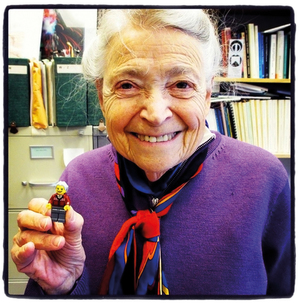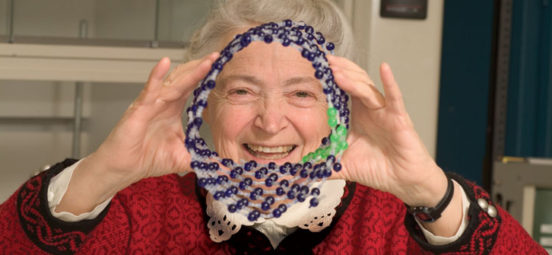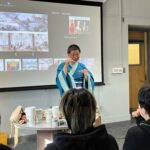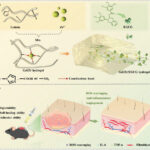In memory of World Tea Organization Advisory Board President
Mildred S. Dresselhaus (1930–2017)
http://www.nature.com/nature/journal/v543/n7645/full/543316a.html
D. D. L. Chung Nature 543, 316 (09 March 2017) doi:10.1038/543316a
- Published online 15 March 2017
Subject terms:

Maia Weinstock
Materials scientist Mildred S. Dresselhaus laid the foundation for carbon nanotechnology. She pioneered techniques to study materials that were just one atom thick, and predicted the possibility and characteristics of nanotubes. From the 1950s, she explored how atomic configurations control how materials conduct heat and electricity, and how these and other properties could be manipulated. Her work has been crucial for developing lithium-ion batteries, electronic devices, renewable-energy generators and much more. For her insights on the Universe’s fourth most-abundant element, she was nicknamed the “queen of carbon science”.
Dresselhaus, who died on 20 February, will also be remembered for her never-dimming enthusiasm, and for her efforts to remove barriers for women in science and engineering. She had enthusiastic fans. A campaign to promote women in science portrayed Dresselhaus as “One in a Millie” and worthy of rock-star fame. A Lego figure (pictured) was designed in her honour. Born Mildred Spiewak in 1930 in New York City, to Polish–Jewish immigrants, Millie, as her students and colleagues knew her, grew up in a rough area of the Bronx during the Great Depression. Old issues of National Geographic nurtured her interest in science. An early talent for music won her free violin lessons, and brought her into contact with more-advantaged families, who convinced her that education was important. Prompted by them, she sought and gained admission to Hunter College High, an elite girls’ school in New York City. Later, at the city’s Hunter College, the medical physicist (and later Nobel prizewinner) Rosalyn Yalow urged her to go to graduate school.
Dresselhaus completed a master’s degree at Radcliffe College in Cambridge, Massachusetts, in 1953. This allowed her to take science classes at Harvard University, but she still had to take exams separately from the men. She did her PhD, on the properties of superconductors in a magnetic field, at the University of Chicago, Illinois, with nuclear-physics Nobel laureate Enrico Fermi. For her experiments, she repurposed surplus equipment from work in nuclear fission to make superconducting wire and microwave instruments. She met and married physics postdoc Gene Dresselhaus in 1958.
In 1960, after stints at Cornell University in Ithaca, New York, both were given staff jobs at the Lincoln Laboratory of the Massachusetts Institute of Technology (MIT) in Cambridge. Dresselhaus began work on the electronic and optical properties of semimetals, substances such as bismuth and graphite that share properties with metals and non-metals.
At the time, materials science was a small, uncrowded field, which Dresselhaus described as an advantage. She had time to raise four children, born between 1959 and 1964. In 1967, she was invited to be a visiting professor at MIT; within months she was offered a permanent position. There she began studying and creating materials in which graphite alternated with other species in atom-thick sheets. This field, graphite intercalation, provides the foundation for lithium-ion batteries and nanocarbons.
Dresselhaus was among the first to use lasers to study the magnetic and optical properties of graphite, and she noticed that laser vaporization produced ‘clusters’ of carbon atoms. This drew the attention of other researchers and led to the discovery of fullerenes, of which the 60-atom ‘buckyball’ is the most famous example. Dresselhaus proposed that similar molecules could also exist in cylindrical form. When carbon nanotubes, or ‘buckytubes’, were indeed produced in the early 1990s, she predicted that they could be either semiconducting or metallic, depending on how the basic repeating unit — a hexagon of carbon atoms — was oriented.
Dresselhaus also found how nanotube properties could be manipulated by adjusting factors such as the tube diameter, and through interactions with other tubes. More generally, she worked out materials-design principles for carbon-based structures. For this, she relied on models based on single-layer sheets of carbon and compared these with sheets containing other elements. In the 1990s, she started to design ‘thermoelectric’ nanomaterials that could generate electricity, hoping to turn waste heat into usable energy.
Dresselhaus was the first woman to become an institute professor at MIT (in 1985) and to receive the US National Medal of Science in Engineering (in 1990). She worked tirelessly to make physics more welcoming for female scientists and helped to create a system whereby women physicists could visit campuses and meet graduate and undergraduate students. She also persuaded research institutions to improve living accommodation for women and to remove discrimination from admission processes. In her lab, however, science came first. In 1973, I knew that I was her first graduate student to pursue graphite intercalation; I did not learn that I was her first female PhD-thesis student until 2010.
She supervised more than 60 PhD students during her more than 50 years on the MIT faculty, and was a warm and nurturing mentor. One evening she cooked dinner for me at her home and I played the piano while her sons played their string instruments; she then drove me back to my dorm.
Millie continued to play the violin and went to the lab every day until she was taken to hospital two weeks before her death. Last July, aged 85, she attended the International Carbon Conference in State College, Pennsylvania. Despite her vast knowledge and emeritus status, she took detailed and neat handwritten notes at nearly every talk.





Comments by wteao
Prof. Shen Dongmei`s New Book on Tea
Rajiv Rochan---“ambassador of tea” of India in China, India Director ...